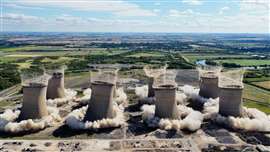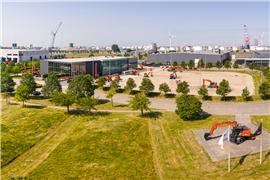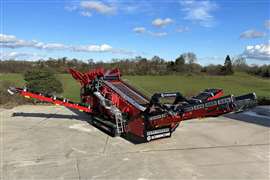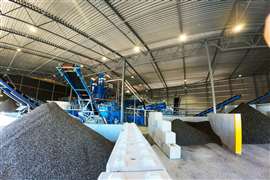Interview: Inside a record-breaking blowdown
28 October 2025
Brown & Mason’s Explosive Demolition Manager, Rikki Isgar, speaks to D&RI about the precision, planning, and challenges behind its demolition of ten cooling towers in a single event.
 Photo: Brown & Mason
Photo: Brown & Mason
Bringing down one cooling tower is a complex task. Bringing down ten in just ten seconds is something else entirely.
In what has now been confirmed as a world record for the most cooling towers demolished by explosives in a single event, Brown & Mason orchestrated a meticulously planned blowdown that saw the massive concrete structures fall exactly as designed.
In this exclusive Q&A, Explosive Demolition Manager Rikki Isgar explains the year-long preparation process, the technical adjustments required for reinforced structures, the logistics of using nearly half a tonne of explosives, and the safety considerations of working alongside live infrastructure and nearby communities.
D&RI: Tell us what makes this a record-breaking project?
Rikki Isgar:
The record was the most cooling towers in a single event demolished by explosive means. This had to be completed within 40 seconds and we achieved it within 10.
Regarding the planning method, how did you go about it?
There has been a lot of design work and enabling. They’ve been working on the towers for approximately a year now from desilting and segregation of all recyclable materials that were internal.
In the last six months we’ve been drilling leading up to the last month of charging and culminating in the event.
How did you decide on the approach that you took?
Through many years of performing events such as this, we’ve repeatedly collapsed cooling towers in this manner.
There were significant differences with a few of these towers due to their reinforcement. They had additional columns added to them at a later phase. There was steel, which led our design in a slightly different manner, but as you can see, they reacted in the same way as all of the others.
How many charges did you use for the project?
We used 16,700 over all of the towers. It’s approximately 2,000 per tower. We were just shy of half a tonne of explosive across the entire event.
We initiated the event in approximately 330 milliseconds. That allowed for keeping air over pressure and ground vibration to a minimum, but also ensuring that there was no interference between each tower to the opposing towers.
How close was the demolition to your models when planning the event?
All of the towers reacted exactly as we designed them to, and we’re really happy with the results.
This is obviously a massive milestone here. What’s the next stage for the project?
The next part of the project will be the crushing and processing of all the aggregate materials on site.
We’ve already had five blowdowns prior to this that have involved steel structures which have gone to recycling and now and earlier this year we had the chimney and this is the last phase of the explosive demolitions on this site.
What percentage of the materials will be recycled?
I think at the moment we’re assuming about 98%. So, we’re well up there with recyclables.
What would you say were the biggest challenges?
Obviously, the proximity to the National Grid infrastructure.
We are slightly further away, but we’ve got the live power station on this site along with high pressure gas main. There’s also the overhead infrastructure for National Grid.
We had some properties that needed to be evacuated because they fell within the exclusion zone.
So, there was multiple challenges with dealing with the event in that aspect, ensuring that everyone was kept safe and all environmental and safety precautions were complied with.
CONNECT WITH THE TEAM









